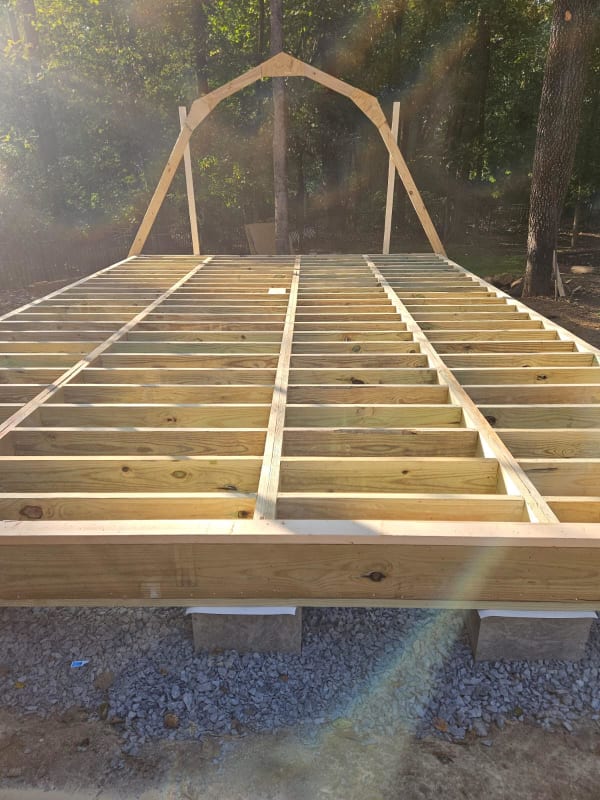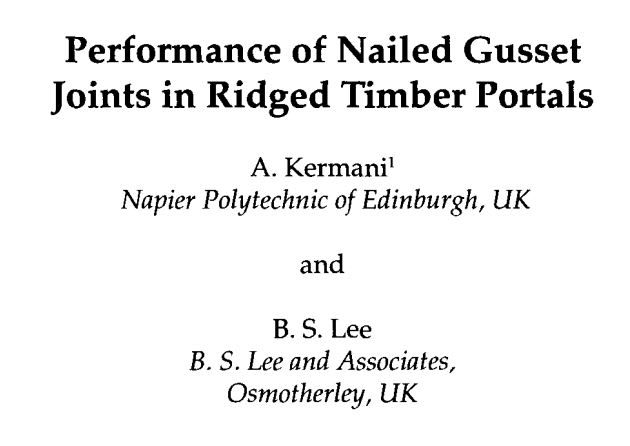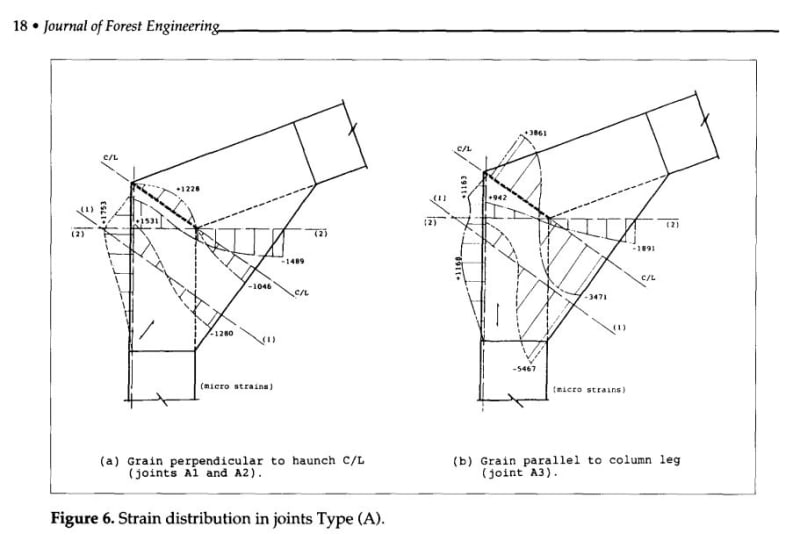TRAK.Structural
Structural
- Dec 27, 2023
- 304
See image below. A local inspector has required an Engineer stamp on the framing that creates the roof/walls of this 16'x24' shed; so I have been called in on this. Analysis of the framing isn't too complicated but I am looking for some ideas on the simplest way to analyze the gusset/nails that connect the 2x members at the joints. Does anyone know of any guides/resources showing how the numbers are checked on this? For the nails, I'm thinking it could be as simple as checking shear on the nail group at each side of the joint based on taking the applied moment and dividing it by the distance between the centroid of each nail group?





![[thumbsup] [thumbsup] [thumbsup]](/data/assets/smilies/thumbsup.gif)